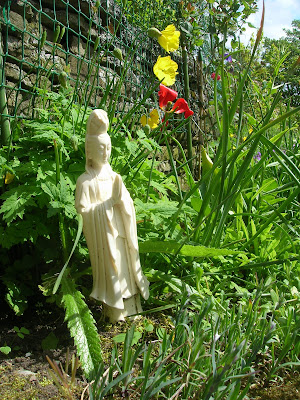It’s amazing how the heart sings when you’ve done something right!
Ever since I’ve been back here at Throssel my brown hat has been lost and found many times. Other people have walked off with it, I’ve walked off with similar looking hats only to find it belongs to somebody else. If a hat goes missing I seem to be first on the list to check with. Did you take my hat by mistake Rev. Mugo? I’ve got a bit of a reputation for walking off in other peoples coats too, they all look much the same in the gloom of the evening cloister after meditation.
Sometimes I’ve wondered if the hat I have now is really ‘mine’, but that has all changed. On Tuesday, while fending off a cold, I occupied myself sewing in name labels. My brown hat was top of the list. All those items I least want to loose track of, socks for example, are now labeled as well. Now I can reast easy knowing my hat will return to me, eventually. Why, only this very morning it went walk-about and returned in under eight hours. It’s a record!
So, when my hat went missing I broke out into silent song:
I’ve not-got that sinkin’ feelin’, now you’ve gone, gone, gone! But looking up the song I thought I was alluding to I find the lyrics are not even close. Ah well…
I’m reminded of a birthday card my dad once sent me of Wallace, of Wallace and Gromit, in the wrong trousers. Wallace had such a look of dismay on his face and I guess my dad empathized. Perhaps he’d put on the wrong trousers at some point in his life.


